Description:
The Axia ChemiSEM is an always-ready-to-image platform with unique column technology that translates to sample-focused data collection. It includes novel integrated user guidance that provides an interactive approach to implementing new techniques. Its UI-integrated EDS provides all analytical controls within easy reach for maximum efficiency.
Axia ChemiSEM offers remarkable all-round performance to obtain the most information from the characterization of different type of materials. It supports the widest range of samples thanks to the optional low-vacuum mode and the ability to adjust the pressure up to 150 Pa. Low-vacuum mode will provide several advantages when dealing with non-conductive samples; not only does it enable charge-free imaging, but it also allows an increase in the material contrast and the use of higher beam currents to perform chemical analyses.
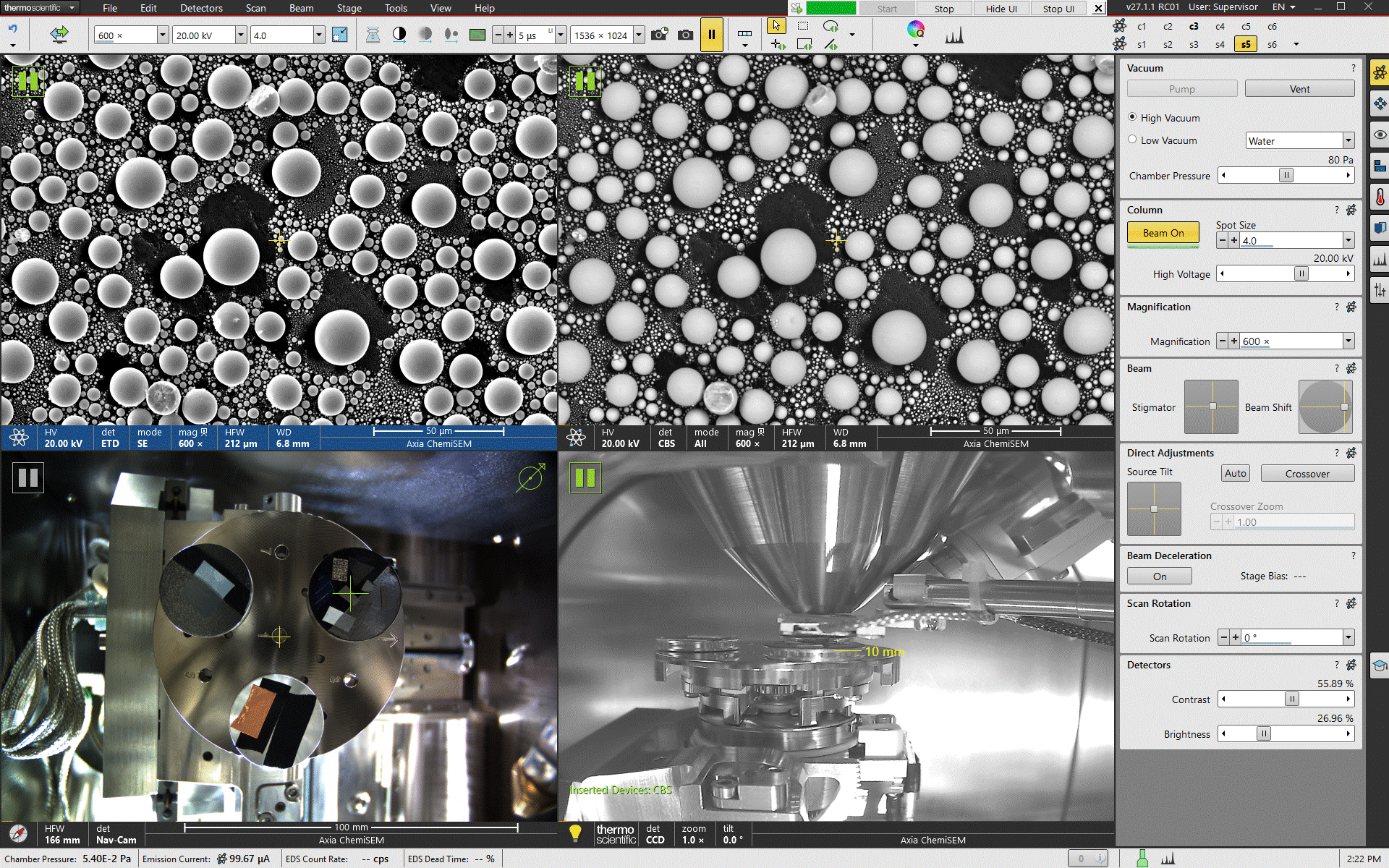
4 Quadrants UI, full screen, setting and customize available
Feature:
Simple user guidance that helps the right setting on sample.
Live quantitative elemental mapping
Flexible sample loading up to 10 kg
Excellent imaging performance
Low-vacuum mode up to 150 Pa
Large sample stage
Easy maintenance
System automation in Axia ChemiSEM
Thermo Scientific AutoScript Software for customized workflow development
Detects up to four signals simultaneously
Specialty:
Live EDX mapping with colouring on the elements which may it an excellent tools for contamination finding, mineralogy, multilayered material, particles and etc. TrueSight X EDS Detector with ChemiSEM technology.
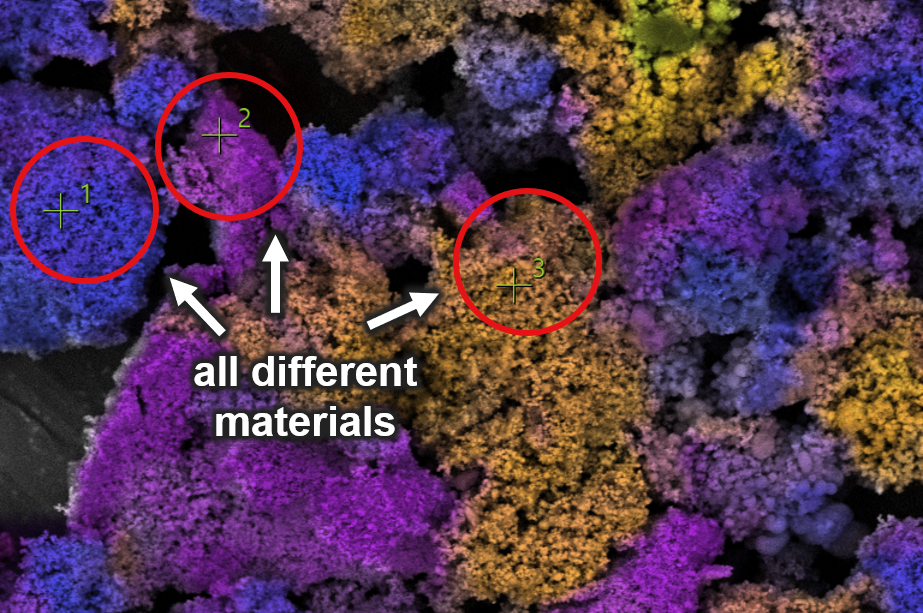
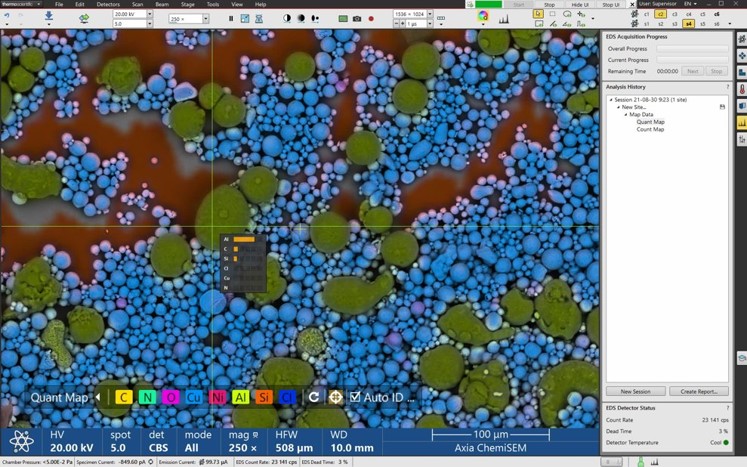
EDS Mapping with Colour to identify the different materials
![]()
LVD imaging

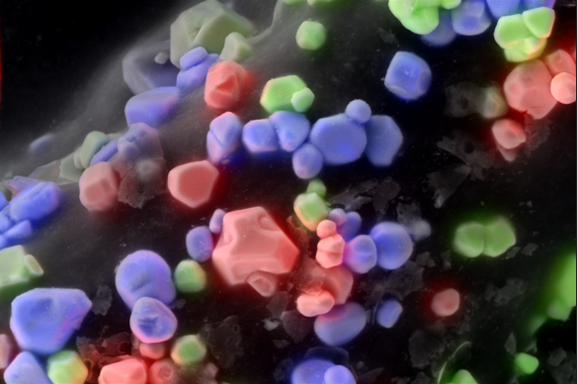
Beam deceleration mode to image at low landing energy to create a better resolution image at low kV, reduced interaction volume and reduced charging effects.
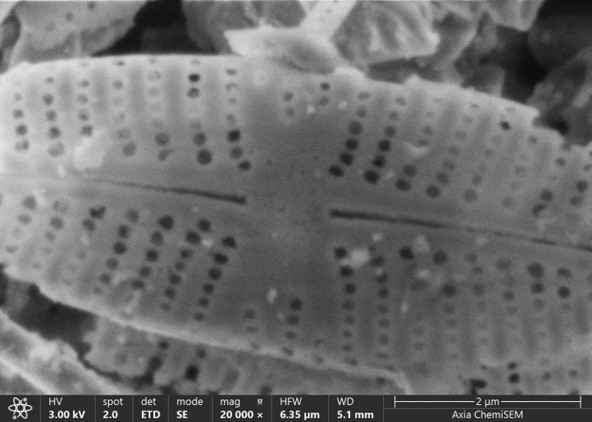
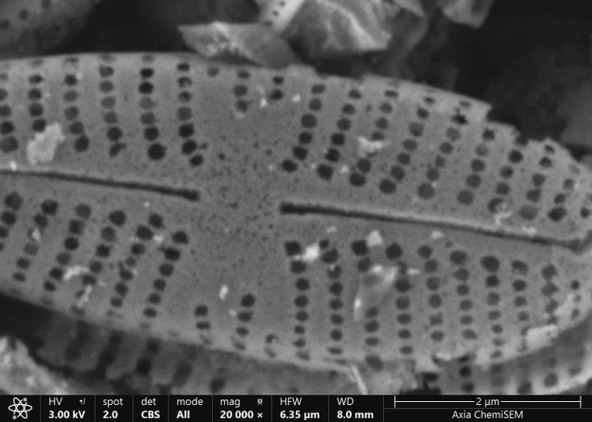
Left: Low kV image without Beam deceleration; Right LowkV imaging with Beam deceleration
Application:
Elemental maps are generated by a quantification algorithm. Therefore, reliable compositional data is shown, and the results do not suffer from peak overlaps that are typical in gross counts maps. Also, the proprietary shadow detection algorithm assists in providing information only from regions where X-rays are detected.
|
|
|
|
Identifies an iron contamination on a piece of paper |
|
 Malaysia
Malaysia